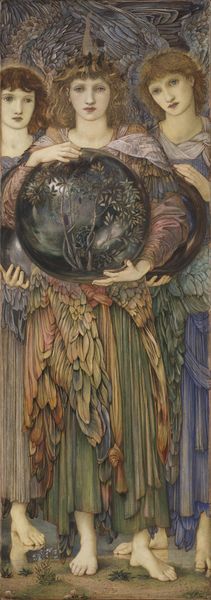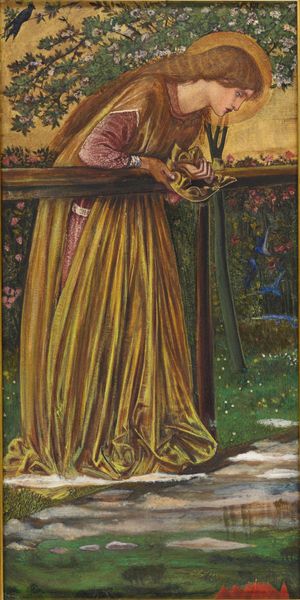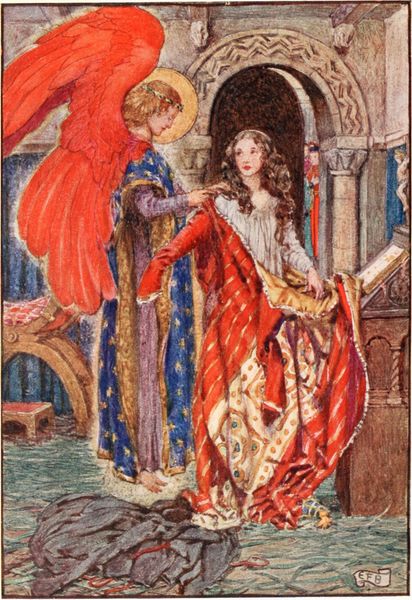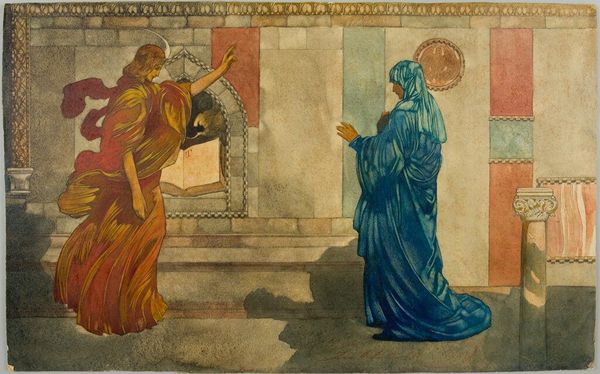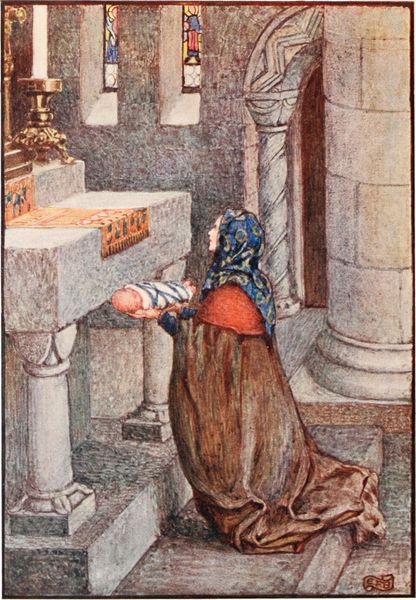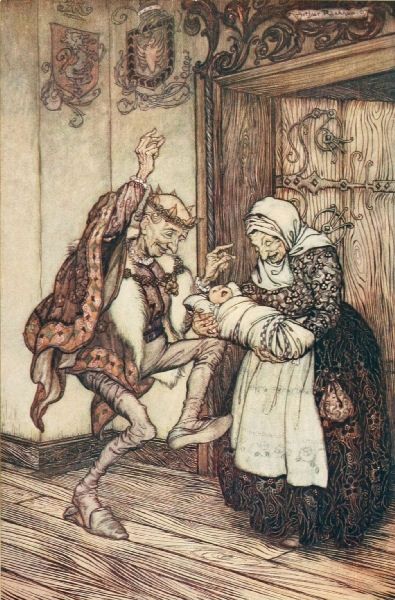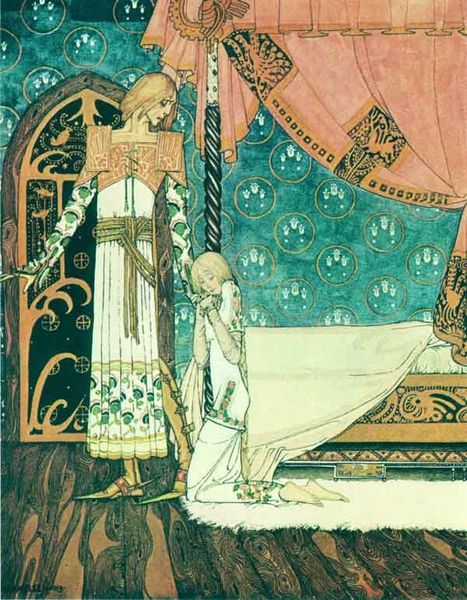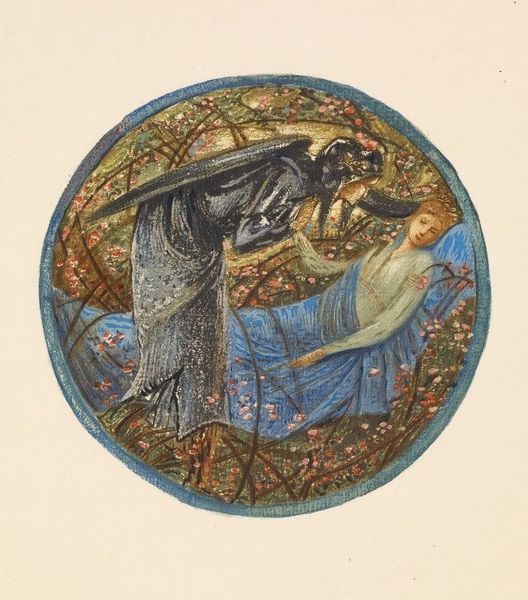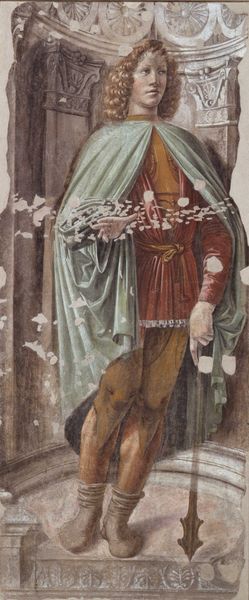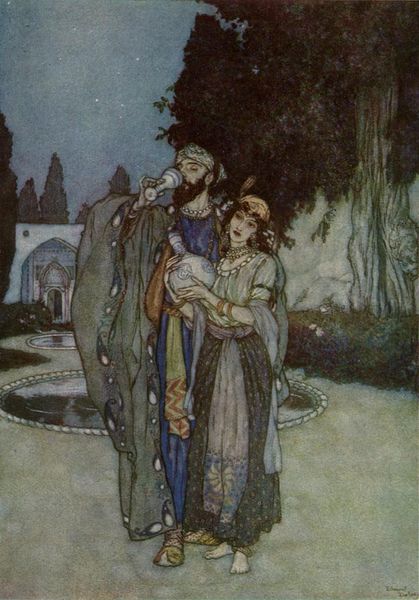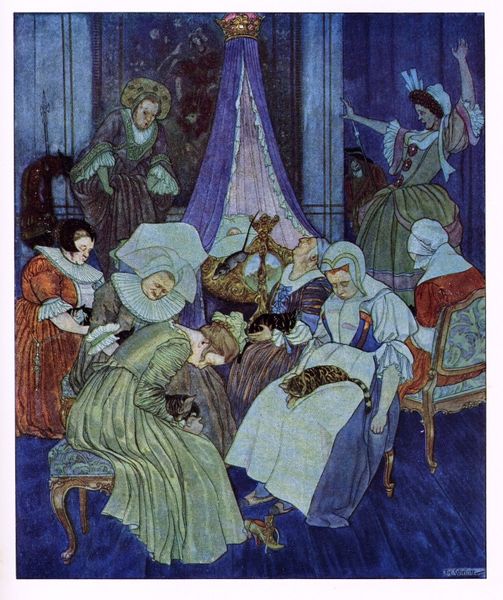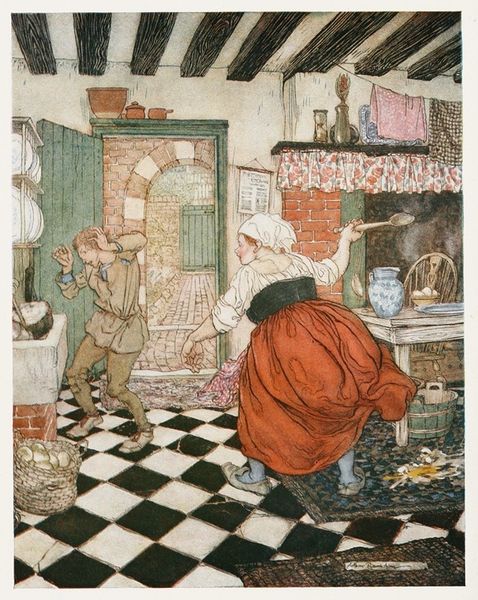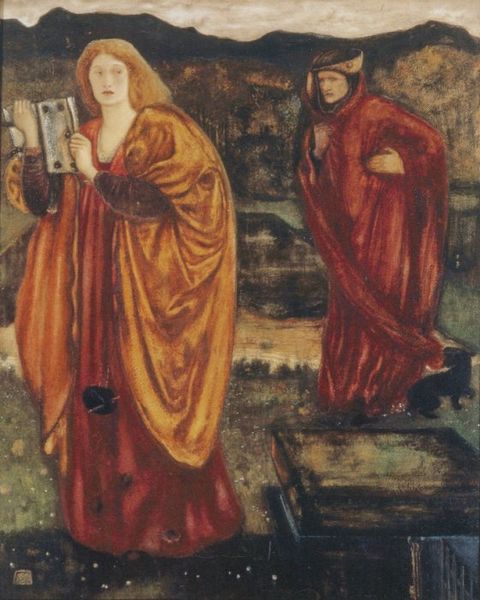
watercolor
#
fantasy-art
#
figuration
#
oil painting
#
watercolor
#
coloured pencil
#
romanticism
#
watercolour illustration
#
watercolor
Copyright: Edmund Dulac,Fair Use
Editor: This watercolour illustration, "His grandmother had Told Him (from The Garden of Paradise)" by Edmund Dulac, shows an interior scene with a boy kneeling before his grandmother who sits in a high-backed chair by a large stained-glass window. The level of detail is just exquisite! What can you tell me about the process involved in making a piece like this? Curator: The creation of Dulac’s illustrations, like this one, involved significant labor and careful application of materials. He employed watercolour and coloured pencils, layering them to create these vibrant colours and intricate details that characterize his works. Looking closer at the paper itself, we can consider it not merely as a surface but as a material imbued with value through its sourcing and preparation. Don’t you agree that such a labour-intensive method challenges the conventional distinction between 'high art' and craft? Editor: Definitely, the sheer time investment speaks volumes. Is there something particular about using watercolour for illustration at that time, compared to say, oils or gouache? Curator: Watercolour, during this period, allowed for quicker reproduction in printed books, directly impacting its consumption and accessibility. Think of the artist then not as just a creator but as part of a production chain; from pigment procurement, to printing and binding processes that were expanding rapidly. Does the mechanical reproduction alter the original aura, or does it make the image accessible to broader audience and thus shift its function and status? Editor: That's fascinating. It makes me reconsider the role of the artist in society and how their work becomes a commodity. Curator: Exactly. Now consider the stylistic influence of Romanticism here - how does the artistic style in return impact the consumption of the piece? Does it create additional value? Editor: This way of analysis makes you consider many things: The medium itself, production and, more than that, the effect of the art market! Curator: It is about deconstructing art into tangible matter and historical processes to examine both production and reception of visual representations.
Comments
No comments
Be the first to comment and join the conversation on the ultimate creative platform.
